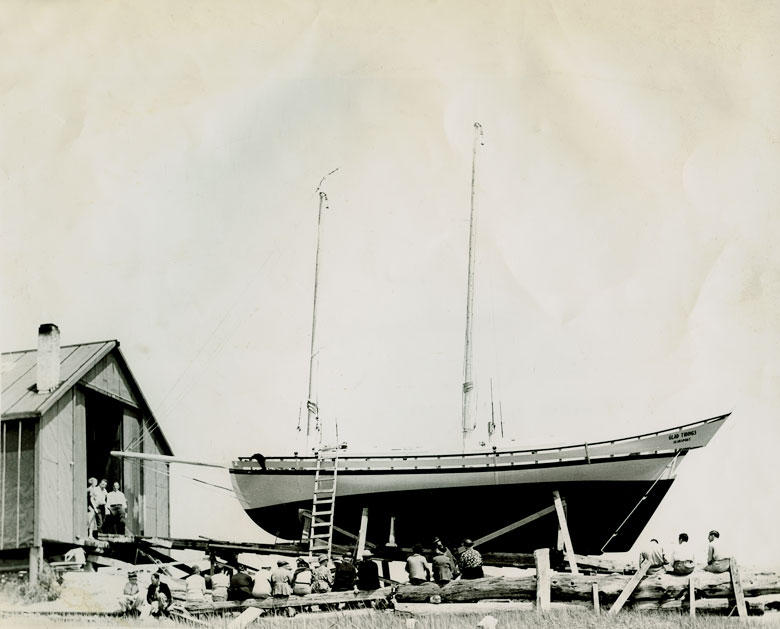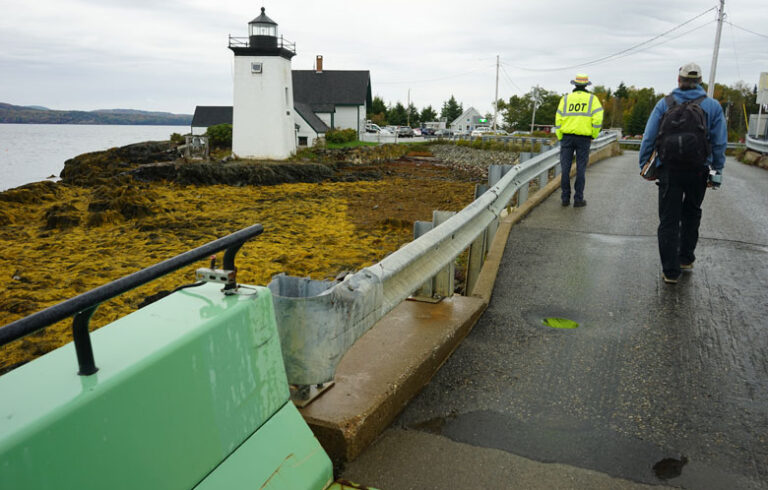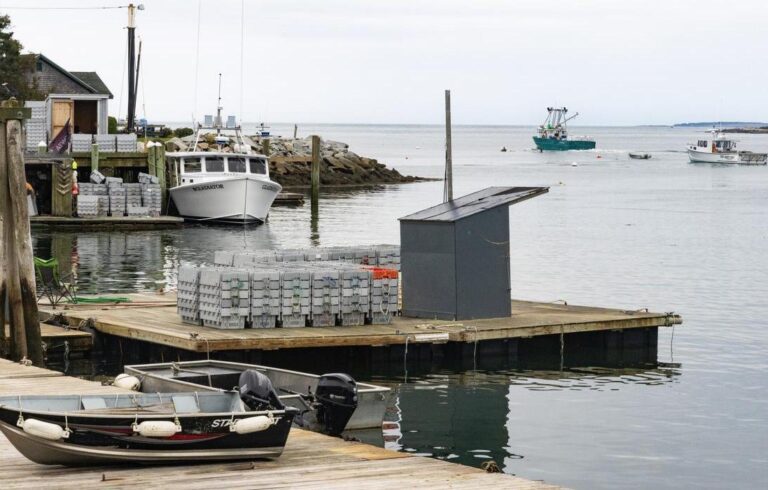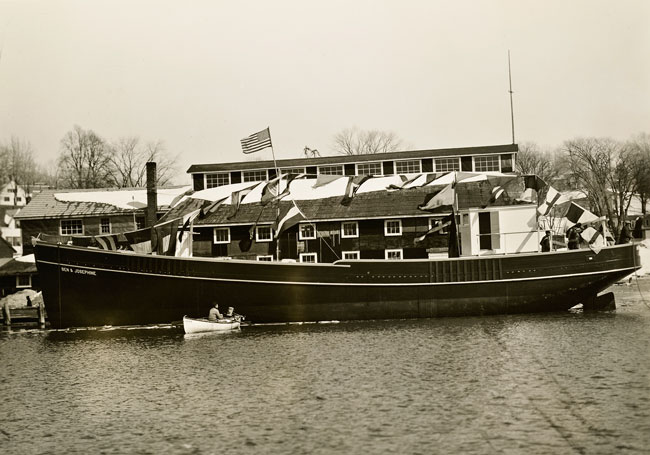
Michael Crowley’s long relationship with the fishing trade publication National Fisherman began at a bar.
“I was in a bar in Kodiak, Alaska,” he remembered recently, “in between halibut trips. I was a halibut fisherman. I saw something I’d never seen before—this publication, National Fisherman.”
That relationship continues, as photographs from the magazine are the subject of his new book, Working the Sea: Historic Images from National Fisherman.
Crowley, who grew up in Laguna Beach in Southern California, was drawn to the fishing and seafaring world as a young man. When he and his brother were in their early 20s, they traveled by train from California to Nova Scotia, at least in part to see the legendary schooner Blue Nose.
But they didn’t exactly have first-class accommodations.
“We were jumping freight trains the whole trip,” he remembers. Why travel that way? “For some adventure. Something different,” he says in his offhand manner.
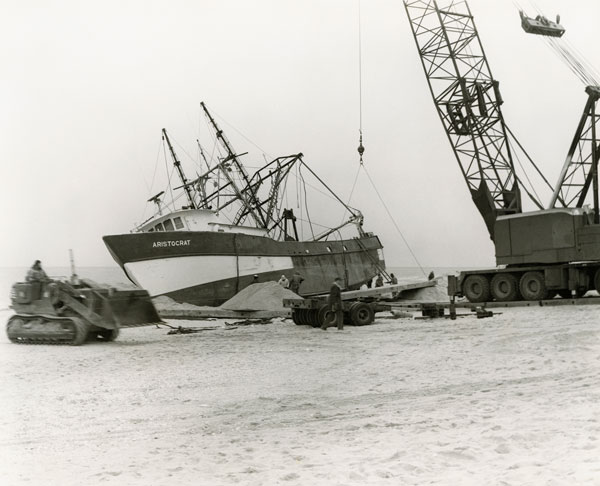
The six-year fishing stint in Alaska was similarly inspired. He’d been living at that time in Berkeley, attending San Francisco State, and remembers observing student protests over the war in Vietnam. Once, police fired shotguns at the protestors and Crowley, merely a bystander, ended up with pellets embedded in his coat.
“I just needed a different scene,” he said, “so that’s what took me to Alaska.”
And the Blue Nose and National Fisherman—together—brought him to Maine. “It had an ad in it,” he said of the publication he saw at the bar, “for a scaled-down replica of the Canadian schooner Blue Nose for sale in Camden. I flew back, took a look at it, and bought it.”
National Fisherman, coincidentally, was based in Camden in those years, “so I started hanging around” at the office, hoping for work, and began writing freelance for the magazine. By 1989, Crowley would be on the editorial staff of National Fisherman.
Such niche journalism work can make an editor a bit of an expert on a topic, but for Crowley, it was experience that informed his work. The halibut fishing years were the real deal, with trips lasting three-plus weeks, with the 70-foot boat he worked on venturing into the Bering Sea which could see “very high winds, and hellacious seas.”
On one trip along the Aleutian Islands, facing 140-knot winds, the captain took the boat into a cove for protection, anchored her from the bow, and kept the throttle at quarter speed through the night to reduce the strain.
“When we hauled the anchor aboard the next morning, half of it was gone,” he said.
Crowley still writes regularly for National Fisherman and WorkBoat, another trade publication, and the connection to National Fisherman has led to his new book, a collaboration with Searsport’s Penobscot Marine Museum.
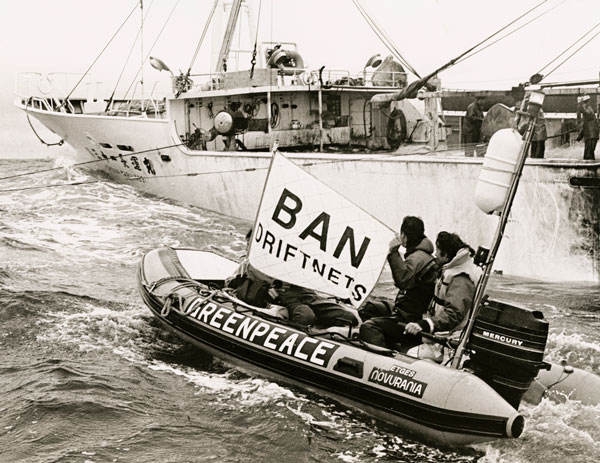
In it, Crowley has chosen dozens and dozens of images from the museum’s collection and explains what is being depicted. In 2012, Diversified Communications, publisher of National Fisherman, donated its thousands of pre-digital (that is, film) photo archives to the museum.

The museum has been building momentum over the last 20 years as the go-to source and repository for maritime photography. To browse through the image collections at PenobscotMarineMuseum.org is to witness, at a safe remove, the way fishing, boatbuilding, and shipping operated along the Maine coast and beyond.
And that’s what Crowley has done with the book. In fact, beyond the intriguing perusing a reader might enjoy, the book succeeds as a history, documenting changes in commercial fishing.
He explained that he is a frequent visitor to the museum’s photo archives for research work for his magazine writing.
“The museum has thousands of pictures” from the magazine, he says, and they are powerfully affecting. “This is fascinating, this is glorious,” and in some cases, “I’m the first person to see this in years,” he says of those visits.
Crowley approached museum photo archivist Kevin Johnson and curator Cipperly Good about the possibility of a book, and they came aboard.
“It’s expansive in that it covers from Alaska, to Maine, to Florida,” he says.
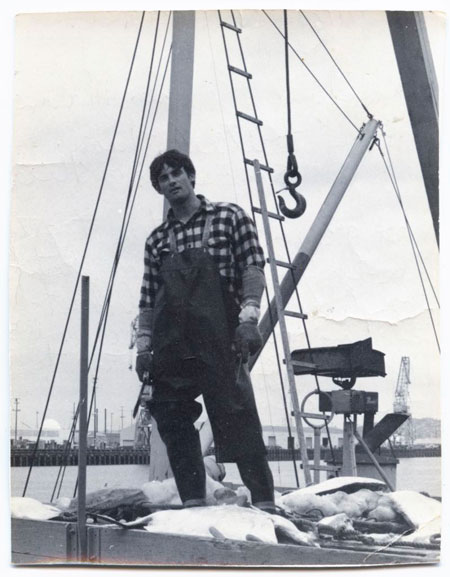
In the book, the history of commercial fishing through the 20th century unfolds in striking photographs, with Crowley’s task being to explain what’s going on in the images, which are divided in sections: Launch Day, At Sea, Selling the Catch, and Drama at Sea.
“Pictorially, you’re seeing the evolution of the technology,” he says. Still, the task of explaining the activity wasn’t easy.
“It’s trying to understand that way of life,” he says, especially when fishing was mostly done from sailing vessels.
“I’ve always been enamored with the days of sail. Guys going out, day after day, trying not to capsize. That was a rugged way of life.”
The text, presented in short essay formats, is clear and accessible, even to those who don’t bring a lot of knowledge to the subject. A question he asked himself before committing to an explanation for a photo, he says, is: “Am I really sure this is what’s happening?”
Crowley has written the text for other books focusing on that maritime world, including Down The Shore: The Faces of Maine’s Coastal Fisheries, featuring photos by Nance Trueworth.
Working the Sea may be purchased at penobscotmarinemuseum.org or at independent bookstores.
